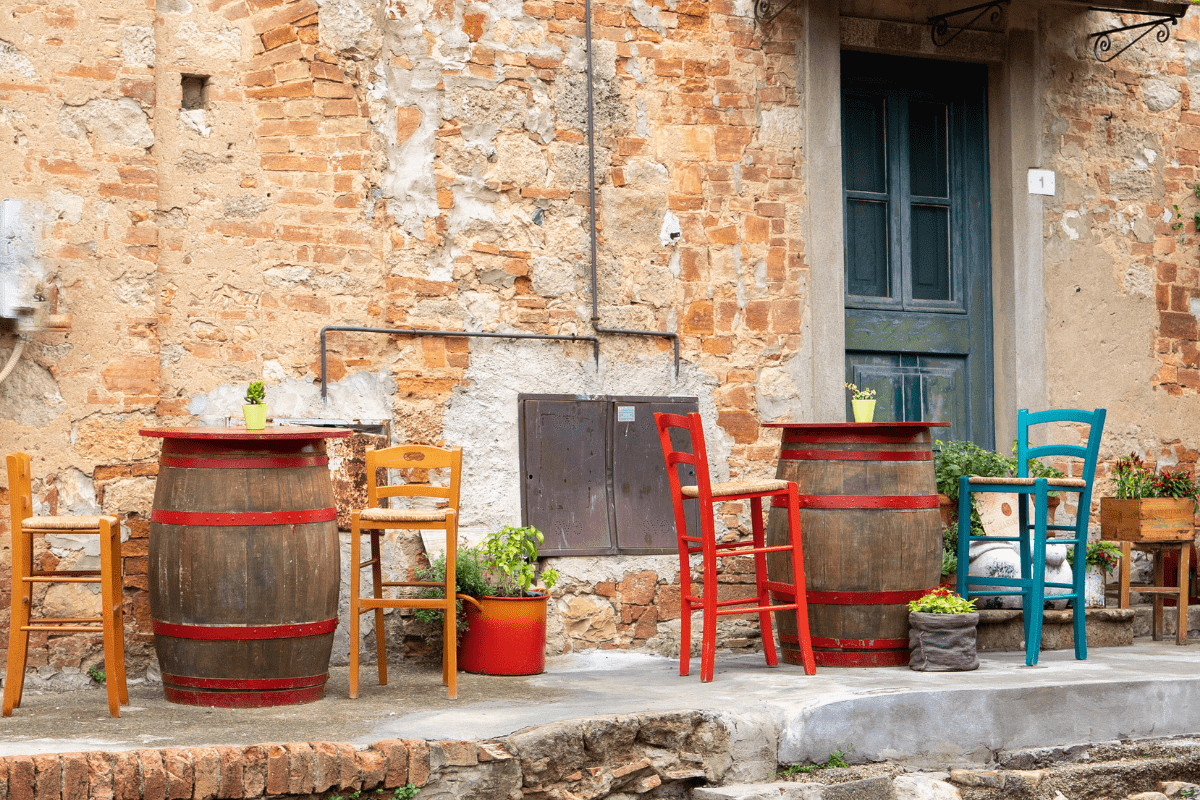Pull up a chair at The Plaza Restaurant in Thomasville, and you're sitting where diners have gathered since 1916, back when a World War was raging and hot dogs were still exotic. Georgia's historic restaurants aren't just serving meals… they're dishing up stories of Greek immigrants who pretended to be Italian, veterinarians who became barbecue legends, and dining rooms where Martin Luther King Jr. planned marches between bites of fried chicken.
The century club: Georgia's oldest continuously operating restaurants
Let's start with the heavy hitters, the restaurants that have been around so long they remember when air conditioning was optional and credit cards were science fiction.
The Plaza Restaurant & Oyster Bar, Thomasville (1916)
Georgia's oldest restaurant holds court in downtown Thomasville, complete with a Georgia Historical Society marker that basically says "we were here first." The Plaza opened in February 1916 with just 26 seats at white marble tables, which sounds quaint until you realize those same recipes are still feeding 500 people at a time today.
Manhattan chef Michael Regina bought the place in 2007 but was smart enough to keep Chef Andrew's 50-year-old pie recipes. Because why mess with perfection? The Greek family ownership that defined its early decades left their mark on the menu, where Greek specialties share space with Southern classics.
Where to find it: 217 S Broad St, Thomasville
When to go: Monday-Saturday, 11am-9pm
Call ahead: (229) 226-5153
Nu-Way Weiners, Macon (1916)
Just days after The Plaza opened, Greek immigrant James Mallis (originally Malliotis) looked around Macon and thought, "You know what this town needs? Hot dogs." On February 27, 1916, he converted his fruit stand into what would become America's second-oldest hot dog chain.
The bright red weiners with secret-recipe chili sauce have survived everything, including the Great Depression when they sometimes served egg sandwiches because meat was harder to find than a parking spot at a Braves playoff game. Today, the Dermatas and Cacavias families (descendants and relatives of the founder) run eight locations across Middle Georgia.
Main Macon locations:
- 3780 Northside Dr (Mon-Sat 6:30am-8pm)
- 148 Emery Hwy (Mon-Thu 6am-9pm, Fri-Sat 6:30am-10pm)
The Colonnade, Atlanta (1927)
Atlanta's second-oldest restaurant started in a white-columned house when Frank Tarleton decided Atlanta needed more fried chicken and pot roast in its life. The Colonnade almost didn't make it through COVID, but the community wasn't having it. They raised over $124,000 through GoFundMe because apparently losing a place with 30+ side dishes would have been a tragedy on par with the Falcons' Super Bowl LI performance.
The portions here are what your grandmother would call "proper," which means you'll need a nap afterward. That's not a bug, it's a feature.
Fresh Air Barbecue, Jackson (1929)
Here's a fun origin story: Dr. Joel Watkins, a local veterinarian, started this place serving rabbits and goats he raised himself. When George W. "Toots" Caston bought it in 1945, he had the good sense to switch to pork and perfect the indirect heat smoking method that earned them the 2022 Ruth Fertel award from the Southern Foodways Alliance.
Their menu is shorter than a tweet, which is usually a sign that a restaurant knows exactly what it's doing. Brunswick stew recipe? Still secret. Still perfect.
Location: 1164 Highway 42 South, Jackson
Pro tip: Call ahead for hours, they keep banker's hours for barbecue
Where history was made: Civil rights era landmarks
Some restaurants serve food. Others served as headquarters for changing America. These places did both, with a side of courage.
Paschal's Restaurant, Atlanta (1947)
Brothers James and Robert Paschal opened their restaurant in 1947 and promptly turned it into the unofficial headquarters of the Civil Rights Movement. We're not talking about hanging a few photos on the wall… Martin Luther King Jr., John Lewis, and Andrew Young literally planned the March on Washington in the back dining room.
The Paschal brothers posted bond for arrested protesters, served Black and white customers together when that could get you shut down, and added La Carrousel Lounge in 1960 as Atlanta's only integrated nightclub. Today you can still order fried chicken from the original 1947 recipe, though they've switched from lard to oil because, you know, health codes.
Essential details:
- 180 Northside Dr SW, Atlanta
- Mon-Thu 11:30am-9pm
- Fri-Sat 11:30am-10pm
- Sunday 11am-9pm
- Book on OpenTable (trust me, you'll need it)
Mary Mac's Tea Room, Atlanta (1945)
Back in 1945, women couldn't easily open "restaurants," so Atlanta had 16 tea rooms instead. Mary Mac's is the last one standing, probably because Margaret Lupo had the radical idea in 1962 that "everyone's money is the same color" and integrated the place.
The state legislature literally passed a resolution naming it "Atlanta's Dining Room," which is like getting a key to the city except it comes with unlimited pot likker. They still use hand-written order slips, which feels quaint until you realize it's actually efficient.
The basics:
- 224 Ponce De Leon Ave NE
- Daily 11am-9pm
- Walk-ins welcome
- (404) 876-1800
Busy Bee Café, Atlanta (1947)
Lucy "Mama Lucy" Jackson from Carrollton taught herself to cook and opened this soul food sanctuary that became another movement meeting spot. MLK Jr. was a regular, which should tell you everything about the fried chicken.
The restaurant just won the 2022 James Beard America's Classics Award, and Tracy Gates (whose father Milton bought it in 1983) has expanded to Atlantic Station while keeping Mama Lucy's recipes intact.
Beyond Atlanta: Regional treasures worth the drive
Not everything good happens inside the Perimeter. Sometimes you need to venture out where the sweet tea flows freely and nobody's heard of oat milk.
Dillard House, North Georgia Mountains (1917)
This started when circuit-riding minister Rev. Henry Byrd needed a place to stay and the Dillards had a spare room. Now they serve up to 3,000 people daily during peak season, all family-style, with vegetables from nearby farms and ham from their own USDA-approved curing plant.
The famous Calico Salad alone is worth the mountain drive, and they were doing farm-to-table before it had a hashtag.
Luigi's Restaurant, Augusta (1949)
Here's my favorite Georgia restaurant fact: Greek immigrant Nicholas "Papou Nick" Ballas opened an Italian restaurant because few people knew Greek food in 1949 Augusta. Three generations later, the Ballas family still serves Greek-influenced Italian food, and during Masters week, good luck getting a table without knowing someone.
How to spot the real deal vs tourist traps
Let me save you from eating mediocre food surrounded by people wearing fanny packs.
Red flags that scream "tourist trap":
Look for these warning signs:
- Staff outside aggressively waving menus
- Plastic-covered menus with food photos
- Signs claiming "authentic Southern cuisine"
- Dining room full of rental car keys
- Menu in seventeen languages
- Fried green tomatoes cost $18
Signs you've found the real thing:
The authentic spots have different energy:
- Locals at noon on Tuesday
- Menu hasn't changed since 1987
- Server knows three generations of regulars
- No Instagram-worthy plating
- Portions that require a to-go box
- Sweet tea comes automatically
Food historian John T. Edge notes that real Southern food comes from "hardship and the spirit of change and ingenuity." If the restaurant's origin story doesn't involve someone's grandmother, an immigrant, or both, keep walking.
How these places survived everything
These restaurants have seen some things. Like, literally everything.
During the 1918 Spanish Flu, restaurants stayed open as essential services while theaters and schools closed. The Plaza and Nu-Way were just two years old and served boarding house residents who had no kitchens.
The Great Depression brought creative menu adaptations. Nu-Way served those egg sandwiches when meat disappeared, and Atlanta newspapers ran "pot likker" debates about stretching ingredients.
World War II meant rationing with stamps and ceiling prices, leading to "Meatless Tuesdays" before that was trendy.
COVID-19 hit different. Georgia closed restaurants March 19, 2020, and reopened April 27 with Byzantine capacity restrictions. Some, like The Colonnade, survived through community support. Others, like Mary Mac's, changed hands but kept going.
The dishes you can't miss
Some menu items have survived longer than most marriages:
Century-old classics:
- Plaza's 50-year pie recipes
- Nu-Way's red weiners with secret chili
- Fresh Air's classified Brunswick stew
- Dillard House's famous Calico Salad
Civil rights era essentials:
- Paschal's 1947 fried chicken recipe
- Mary Mac's complimentary pot likker
- Busy Bee's soul food platters
- Mary Mac's legendary tomato pie
Supporting these living museums
The National Trust for Historic Preservation has pumped $5.7 million into 130 historic restaurants since 2021, recognizing that these places anchor neighborhoods. The Georgia Trust's "Places in Peril" program fights for threatened properties.
When Miller's Soul Food in Dublin got a $40,000 grant in 2022, they called it "one of the oldest Black-owned" eateries still operating. That's not just preserving recipes, that's preserving stories.
Planning your historic restaurant crawl
Ready to eat your way through history? Here's your action plan:
Start in Atlanta with the civil rights trio: Paschal's for lunch, Mary Mac's for dinner, Busy Bee for Sunday brunch. Book Paschal's on OpenTable, walk into Mary Mac's like you own the place, and bring cash for Busy Bee because sometimes they're old school like that.
Hit Middle Georgia for Nu-Way Weiners. Try multiple locations because each has slightly different vibes. The secret chili recipe has survived since 1916, so clearly they're doing something right.
Make the Thomasville pilgrimage to The Plaza. It's a drive, but you're literally eating at Georgia's oldest restaurant. Order the pie. Any pie. Chef Andrew's recipes have lasted 50 years for good reason.
Venture to the mountains for Dillard House when you want to eat family-style until you need new pants. Make it a weekend trip because you won't be moving much after dinner.
The bottom line
Georgia's historic restaurants aren't museums where you look but don't touch. They're living, breathing places where Georgia defined its culinary culture before any other state thought to try, where the biggest menu change might be switching from lard to oil for the health inspector, and where your server might tell you about the time their grandmother served Martin Luther King Jr. his usual order.
Chef Mashama Bailey, who transformed Savannah's old segregated bus station into The Grey, puts it perfectly: these meals "establish a generational continuity for a community." Every time you order that secret-recipe chili dog or hand-written order of fried chicken, you're not just eating lunch… you're keeping Georgia's diverse culinary heritage alive, one perfect bite at a time.
So skip the chain restaurants with their focus-grouped menus and Instagram-ready plating. Find the place where the sign's been broken since 1973, where locals argue about the best booth, and where recipes outlive their creators. That's where the real Georgia lives, one plate at a time.





